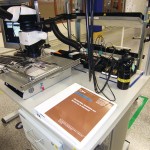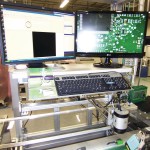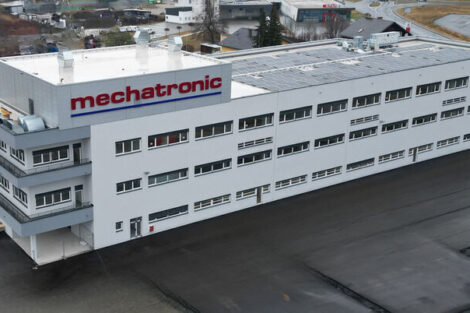Quality and reliability are two important concepts when producing high-tech electronics for the automotive industry, especially when the electronic controls are vital security functions in modern vehicles. For years, IPC standards were considered “North American standards” but since the early 1990s, they have spread to all parts of the electronic world. The question now is: what benefit do IPC standards have for the electronic hardware supply chain and the automotive industry?
To provide answers to that question, several companies in Europe representing electronic design, CAD, bare board production, assembly and soldering explain how they use IPC standards in their daily business routines.
This is the third article in this series and it will cover how a large OEM, Autoliv Inc., with headquarters located in Sweden, is using IPC Standards to help eliminate non-functioning automotive safety products.
Zero defect policy
The Autoliv Group is a multinational OEM company with 43,000 employees working in 80 factories in 30 countries around the world. The company earns 7.2 billion US$ annually. The company started producing seatbelts in 1956 and airbags in 1980 and today is a worldwide leader in automotive safety and technology, manufacturing a wide product range for the automotive industry. Their mission is to substantially reduce traffic accidents, fatalities and injuries and maintain its “Zero Defect Policy.”
At its low- volume factory in Motala (250kilometers south-west of Stockholm), the company is assembling and soldering 50 active products in three SMD lines and seven final assembly lines. At this location, Sven-Olof Abrahamsson, (production expert) is in charge of implementing the “Zero Defect Policy.” Since 2006, defects have been reduced by 80 percent.
A tool for reducing defects
Nearly 20 years ago, Abrahamsson had his first contact with IPC standards when exploring design rules for the Autoliv R&D department. Abrahamsson, who has a solid background in bare board manufacturing, assembly and soldering from his years at Luxor and Nokia, realized early in his career that a perfect solder joint needs an almost perfect design. To achieve this, all bare boards are designed according to the IPC-2220 family of design documents and Class 3 criteria.
In the 1990s, Abrahamsson developed the technical document, “Generic Specification for Rigid PCBs” that is still used today for all bare boards used in the Autoliv Group’s production process. The purpose of the document is to specify the purchasing technical requirements for all PCBs used in safety related projects at the company. They printed boards have to be fabricated for use within Automotive Safety Electronics and must meet IPC Class 3: High Reliability Electronic Products, therefore references to any IPC specifications should meet Class 3 unless stated otherwise.
Another IPC standard used by Autolivis IPC-6012 C,Qualification and Performance Specification for Rigid Printed Boards and covers:
1. Material requirements
- All materials used in the manufacture of PCBs must qualify to IPC-6012C and any noted requirement.
- FR-4 IPC-4101C/21 alternative IPC-4101C/24 (IPC-4101C, Specification for Base Materials for Rigid and Multilayer PCBs.)
2. Foil
Foil must qualify to corresponding IPC-4562 specification. (IPC-4562A, Metal Foil for Printed Board Application)
3. Plating
As per IPC-6012C, section 3.6.
4. Solder mask
- Solder mask must qualify to IPC-SM-840 and IPC-6012C, section 3.7. (IPC-SM-840E, Qualification and Performance Specification of Permanent Solder Mask and Flexible Cover Materials.)
- Visual acceptability guidelines per IPC-A-600 section 2–9 (class 3). (IPC-A-600H, Acceptability of Printed Circuit Boards)
- Masked board must meet 500VDC withstanding voltage test in accordance with IPC TM-650, TM 2.5.6.1. (IPC-TM-650, Test Methods Manual).
5. Board finish
- As per IPC-6012C, section 3.2.7
- Silver immersion, reference IPC-4553A. (IPC-4553A, Specification for Immersion Silver Plating for Printed Circuit Boards).
- Tin immersion, reference IPC-4554. (IPC-4554, Specification for Immersion Tin Plating for Printed Circuit Boards).
6. Visual examination requirements
- PCB’s must meet all requirements listed in IPC-6012C Section 3.3.
- No repair is allowed.
7. Electrical requirements
- PCB’s must comply with IPC-6012C, section 3.8.
- No repair is allowed.
Assembly and soldering stage
When bare boards arrive at the assembly and soldering factory at Autoliv in Motala, optical inspection is not done because all inspections are done at the bare board suppliers to conduct their own visual and electrical inspection and to deliver boards with zero defects. Not all bare board suppliers are able to meet these requirements and therefore the company has an exhaustive audit process, which has proven difficult to pass.
In the final optical inspection of all assembled and soldered boards, the company references IPC-A-610E(Acceptability of Electronic Assemblies)and IPC-7711/21B (Rework, Modification and Repair of Electronic Assemblies) handled by CIS operators. The company in Sweden views the translations of IPC standards to local languages as a large advantage in understanding IPC standards used on the factory floor.
Benefits of Using IPC Standards
For the company, the benefits of using IPC Standards are substantial:
- Suppliers do not deliver defective bare boards. The main reason is the tool IPC class 3, which gives awareness on the supplier side.
- When Autoliv suspects that a bare board delivery is not perfect, they has the right according to the IPC class 3 level to take part of the suppliers testand verification documentation. These procedures have helped them several times in their mission to reach a zero defect level.
- The company saves time, resources and money by relying on IPC standards and not having to develop their own.
- For more than five years, the company has saved millions dollars by decreasing defect rates, thus resulting in a better yield of defect free products.
Share:













